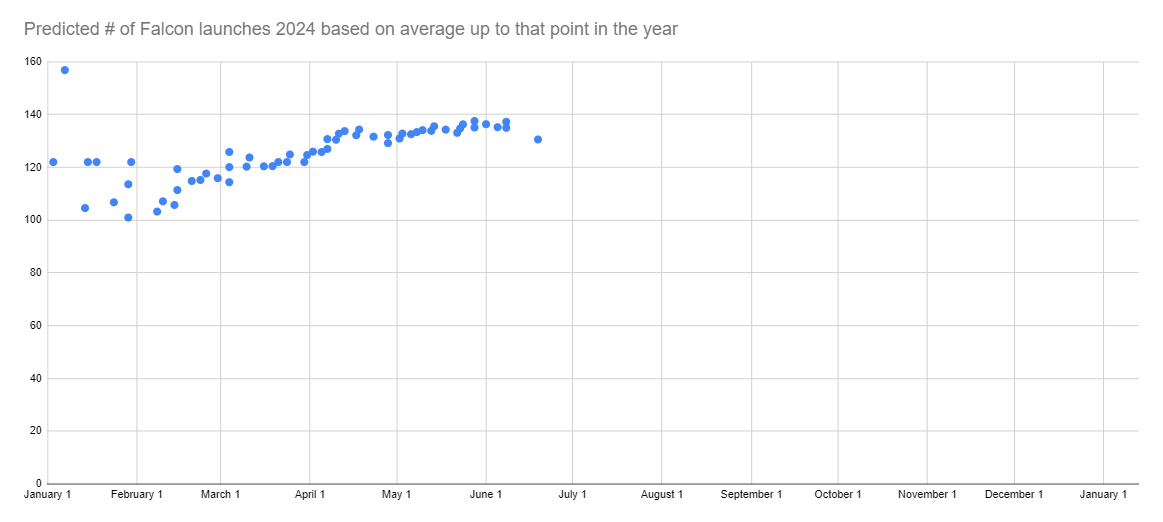Counts Falcon 9, Falcon Heavy, and Starship launches equally. Only full orbit or earth escape trajectory counts, with perigee >150km or apogee >1000km.
Re "Successfully send to orbit":
Most count July 12 launch of starlink 9-3 as a failure. Payloads sort of did orbit but perigee was too low and they re-entered.
If the criteria here is just that the launch results in rocket reaching some sort of orbit, it could possibly qualify, but I think that would potentially create confusion.
A clarification on whether it counts as successful would be good.
@ChristopherRandles Was the perigee above 150km? Then according to the conditions it would count, no? The word successfully is the sticking point I guess but I'm inclined to count it
@Mqrius Sorry I should have looked that up.
https://spacenews.com/starlink-satellites-lost-on-falcon-9-upper-stage-failure/
"The Starlink 9-3 satellites that were launched on July 11, 2024, had a perigee of 135 kilometers after a Falcon 9 upper stage engine anomaly:"
There is perhaps potentially some ambiguity over whether it is the rocket that has to successfully reach orbit or the launch to be successful or the payloads reach orbit or the mission, but the 150km perigee probably does it to ensure this does not count.
Perhaps it might be useful you could clarify whether you would count launches where
A. Launch went smoothly to intended orbit perigee>150km but payload deploy did not happen.
Launch did not go smoothly but reached unintended orbit with perigee>150km and payload either B. did not deploy or C. did deploy but not useful or D. did deploy and was able to reach useful orbit at a cost of reduced lifetime due to fuel usage or E. did deploy with no significant impairment to usefulness of payloads.
@ChristopherRandles Lets choose the condition that makes it easy to decide, and say any time the second stage reaches a perigee of 150km or higher counts. Then we also cover cases like Starship not deploying payload for example.
